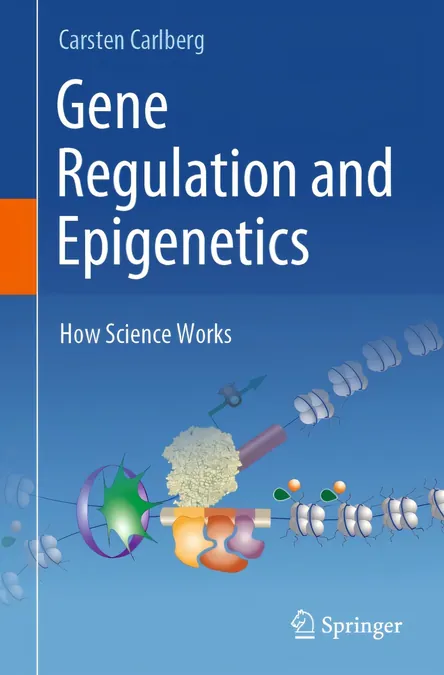
Breakthrough Textbook Reveals Secrets of Gene Regulation and Epigenomics!
2024-11-05
Author: Rajesh
Introduction
In a monumental stride for the scientific community, Professor Carsten Carlberg has unveiled his latest textbook, titled 'Gene Regulation and Epigenetics: How Science Works.' This meticulously crafted work is published by Springer and aims to enlighten graduate students about the intricate machinations of gene regulation and epigenomics.
Importance of Gene Regulation
Gene expression is the cornerstone of cellular identity, dictating the characteristics of cells and tissues. Thus, understanding how gene regulation functions is critical not only in biomedical studies but also for grasping how our bodies operate in both health and disease. Factors like diet and infections play pivotal roles in influencing gene behavior, underscoring the need for a comprehensive educational resource on the subject.
Professor’s Perspective
Professor Carlberg passionately advocates, “A solid grasp of gene regulation concepts is essential for students across biomedical fields.” His textbook is built on insights garnered from years of lectures at the esteemed University of Eastern Finland.
The Role of Chromatin and Epigenetics
Delving into the microscopic world, the textbook explains how our DNA is structured into chromatin within the cell nucleus. This chromatin is key to gene accessibility and is subject to epigenetic programming, which affects gene expression without altering the underlying DNA sequence itself. Interestingly, while all cells in our body carry the same genetic code, variations in epigenetic modifications create unique 'epigenomes' for different cell types, determining which genes are turned on or off.
Environmental Influences on Epigenetics
What’s particularly fascinating is how environmental signals can induce epigenetic modifications, some of which may even be reversible. For example, adopting a healthier lifestyle can reverse detrimental epigenetic changes that contribute to conditions like insulin resistance—a condition increasingly relevant in today's health landscape dominated by obesity and sedentary living.
Understanding Transcription Factors
The textbook shines a spotlight on transcription factors, pivotal proteins that regulate gene expression. Among the 1,600 human genes encoding these factors, Professor Carlberg emphasizes the importance of notable players like p53, NFkB, and the estrogen receptor. This focus equips students with a deeper understanding of the molecular mechanisms behind gene regulation.
Structure and Content of the Textbook
Structured to maximize learning, the book starts with foundational concepts and progresses to advanced topics, including chromatin dynamics and the role of non-coding RNA. It also navigates the field of epigenetics from dual perspectives: health and disease, complete with a glossary to clarify complex terms.
A Legacy of Teaching
Moreover, this publication is not simply an academic exercise; it is a culmination of Professor Carlberg's teachings in the Molecular Medicine and Genetics course he has been imparting since 2002. This updated textbook combines and enhances his previous works, 'Mechanisms of Gene Regulation' and 'Human Epigenomics,' to create a more comprehensive resource for aspiring biochemists and geneticists.
Conclusion
As Professor Carlberg continues to shed light on the mysteries of gene regulation, students and researchers alike will undoubtedly find this textbook to be a vital addition to their scientific arsenal. The journey to understanding gene expression is just beginning—are you ready to explore its depths?



 Brasil (PT)
Brasil (PT)
 Canada (EN)
Canada (EN)
 Chile (ES)
Chile (ES)
 España (ES)
España (ES)
 France (FR)
France (FR)
 Hong Kong (EN)
Hong Kong (EN)
 Italia (IT)
Italia (IT)
 日本 (JA)
日本 (JA)
 Magyarország (HU)
Magyarország (HU)
 Norge (NO)
Norge (NO)
 Polska (PL)
Polska (PL)
 Schweiz (DE)
Schweiz (DE)
 Singapore (EN)
Singapore (EN)
 Sverige (SV)
Sverige (SV)
 Suomi (FI)
Suomi (FI)
 Türkiye (TR)
Türkiye (TR)